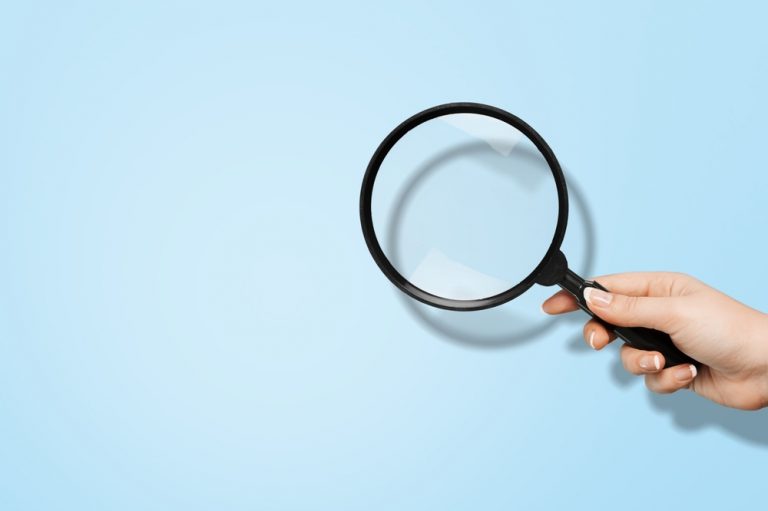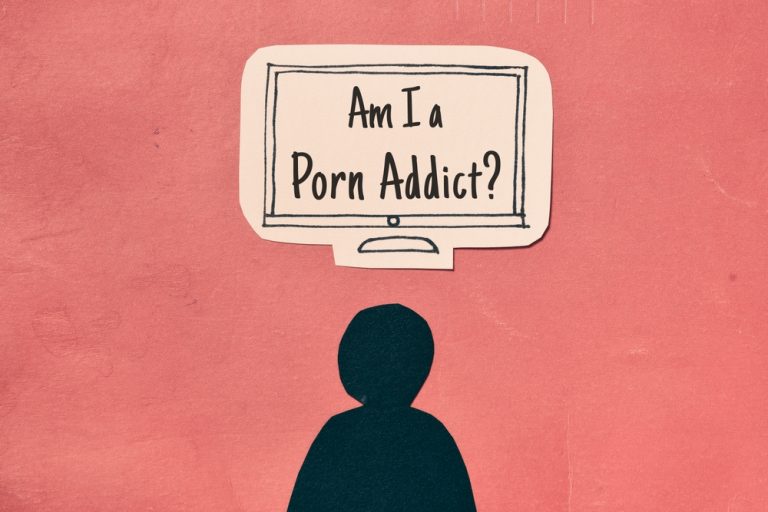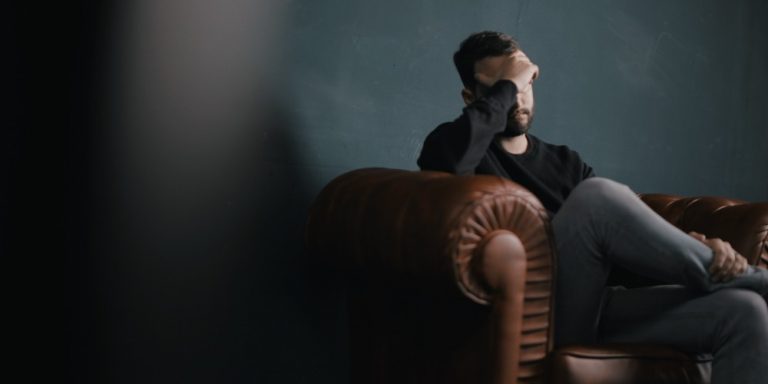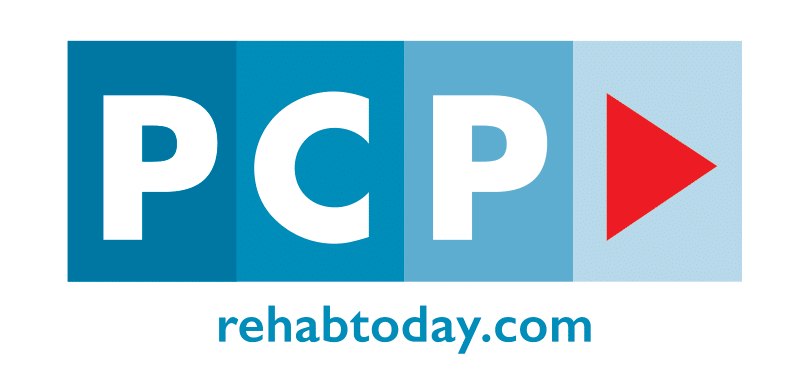Did you know that porn addiction affects 13% of the global population? That means millions of people worldwide struggle with compulsive porn use, often without realising the long-term effects. With instant access to explicit content, it’s easier to fall into a cycle of excessive consumption.
Problematic Pornography Use (PPU), also known as Compulsive Pornography Behaviour, describes patterns of porn consumption that cause distress, interfere with daily living or create negative consequences in personal relationships, work or overall well being. Note that “porn addiction” is a lay term not an official clinical diagnosis but the experiences of loss of control and harm that people describe are very real and deserve compassion.
This guide will help you recognise the signs of compulsive porn use, understand when porn consumption becomes a problem and explore evidence based ways to overcome porn addiction.
Whether you’re evaluating your own patterns or concerned about someone else, this information will give you a foundation to make informed decisions about seeking help.
Is Porn Addiction a Real Diagnosis? Understanding the Clinical Debate
The classification of porn addiction within clinical frameworks is still a topic of debate among mental health professionals. Understanding this context will help you gain an understanding of the terminology and treatment options with a realistic view.
DSM-5 Status
The Diagnostic and Statistical Manual of Mental Health Disorders (DSM-5) used by mental health professionals in the US does not currently include porn addiction as a formal diagnosis. The diagnostic committees decided this due to lack of research evidence to establish clear criteria to distinguish problematic pornography use from other mental health conditions.
This absence from the DSM-5 has led to misconceptions that porn addiction “isn’t real” or that people struggling with compulsive porn consumption are just lacking willpower. But the exclusion means there’s more research needed not a dismissal of people’s genuine experiences of loss of control around porn use.
ICD-11 & Compulsive Sexual Behaviour Disorder (CSBD
The International Classification of Diseases (ICD-11) published by the World Health Organization does include Compulsive Sexual Behaviour Disorder (CSBD) as an impulse control disorder. CSBD is defined as:
A persistent pattern of sexual behaviour that has become the central focus of a person’s life
Repeated unsuccessful efforts to significantly reduce sexual behaviour
Continued sexual behaviour despite adverse consequences
Distress that is directly related to the repetitive sexual behaviour
Problematic pornography use often overlaps with CSBD criteria, especially when viewing porn becomes compulsive and interferes with other areas of life. Many clinicians use CSBD as a framework to treat individuals struggling with compulsive porn consumption even if porn addiction isn’t the primary diagnosis.
Why the Terminology Varies
The variation between “porn addiction”, “problematic pornography use” and “compulsive sexual behaviour” reflects the ongoing effort to understand these patterns without over-pathologizing normal sexual expression. Mental health professionals know that watching porn doesn’t automatically mean addiction or mental health disorder.
The key difference is whether porn use causes real distress or impairment in daily life, relationships or personal functioning. This approach helps avoid labelling every instance of frequent porn consumption as problematic while still acknowledging when intervention may be needed.
Porn Addiction Symptoms: What Problematic Porn Use Actually Looks Like

Symptoms of porn addiction appear in patterns related to behaviour, emotions, relationships, and daily functioning. Understanding these categories will help you identify patterns that may indicate when casual viewing has become compulsive behaviour that needs attention.
1. Loss of Control Symptoms
Loss of control is the core feature that distinguishes casual porn use from addiction-like behaviour. These symptoms are the same as those seen in substance use disorders and other behavioural addictions.
Repeated unsuccessful attempts to cut down: Despite genuine desire and multiple attempts to reduce or stop viewing porn, individuals find themselves returning to previous patterns. This isn’t just about preference, people report feeling unable to maintain the changes they want to make.
Escalating time spent watching: What may have started as brief viewing sessions gradually extends into hours long. People often report losing track of time while accessing porn and feeling surprised by how much time has passed.
Need to use more extreme content to feel the same effect: Similar to tolerance in drug addiction, individuals may find that previously arousing content no longer provides the same level of satisfaction. This leads to seeking more explicit, novel or extreme pornographic material to get aroused.
Feeling “pulled back” to viewing: Many describe experiencing intense cravings or urges to view porn that feel hard to resist. These urges feel intrusive and override logical thinking about consequences.
2. Compulsive / Behavioural Symptoms
Compulsive porn use often develops automatic, ritual-like qualities that distinguish it from conscious choice-based viewing.
Intrusive thoughts: Thoughts about accessing porn may intrude during other activities, making it hard to focus on work, school or social interactions. These thoughts can feel persistent and unwanted.
Using porn as a stress coping mechanism: Pornography viewing becomes a default response to difficult emotions, stress, boredom or loneliness. The behaviour happens almost automatically without conscious decision making.
Ritualistic porn habits: Specific patterns develop around when, where and how porn is accessed. These habits become deeply ingrained and hard to break.
Can’t stop once started: Even when intending to view porn briefly, individuals may find themselves unable to stop until hours have passed or until they reach a certain type of content or level of arousal.
3. Psychological & Emotional Symptoms
The emotional impact of compulsive porn use goes beyond the viewing itself and affects overall mental health.
Shame, guilt or anxiety after viewing: Ongoing negative emotions after porn consumption that interfere with mood and self-image. This is more than temporary guilt and is ongoing distress about the behaviour.
Mood swings when trying to stop: Similar to withdrawal symptoms in substance addiction, trying to reduce porn use may trigger irritability, anxiety, depression or mood instability. These symptoms often drive people back to viewing as a way to feel better.
Using porn to escape loneliness, trauma or emotional pain: When porn becomes the primary way to manage difficult emotions or past trauma, it can prevent healthy coping mechanisms and delay healing from underlying issues.
4. Relationship & Intimacy Symptoms
Compulsive porn use often impacts the ability to form and maintain healthy relationships and sexual connections with real life partners.
Reducing real-life intimacy: Sexual desire for partnered sexual activity may decrease as porn consumption increases. Some individuals report feeling more interested in porn than in sexual activity with their sexual partners.
Strained or secretive behaviour: Relationships may suffer due to dishonesty about internet use, hidden devices or browsing history or emotional withdrawal. Partners may sense distance or deception without knowing the cause.
Feeling disconnected from partner: Unrealistic sexual expectations developed through porn consumption can create dissatisfaction with real life sexual encounters. Partners may seem less attractive or sexually interesting compared to pornographic content.
Relying on porn for arousal: Some individuals find they need to fantasise about pornographic scenarios or view porn to get aroused, even during partnered sexual activity. This can lead to erectile dysfunction or other sexual health problems.
5. Functional Impact Symptoms
When porn use starts to interfere with important areas of life functioning, it’s time to seek professional help.
Viewing at work or inappropriate times: Viewing porn during work hours, in public spaces or at times that could get you in trouble indicates the behavior is overriding good judgment about context.
Disrupting sleep: Late night viewing sessions that interfere with sleep schedules or can’t sleep without viewing porn affects physical health and daily functioning.
Neglecting responsibilities: Important tasks related to work, school, family or personal care are postponed or avoided to access porn. This can have big consequences in professional life and personal relationships.
Reduced productivity or motivation: Preoccupation with porn or fatigue from excessive viewing reduces performance and engagement in other activities you used to value or enjoy.
When is Porn Use a Problem?
Understanding when porn use crosses from normal sexual expression into problematic territory is key to making informed decisions about seeking help or making changes.
The Key Threshold: Harm + Loss of Control
The main indicator that porn use is a problem is the combination of negative consequences and loss of control despite wanting to change. This threshold focuses on impact not frequency.
Frequency does not equal addiction. Some people may view porn daily without distress or life impairment, while others may view less frequently but struggle with guilt, relationship problems or can’t stop when they want to. The key questions are: is it causing problems and do you feel in control of your choices.
Focus on consequences not just usage patterns. Meaningful indicators include relationship conflicts, work or academic problems, financial consequences from premium subscriptions, physical health impacts or persistent emotional distress related to porn use.

High Libido vs Porn Addiction
It’s important to distinguish between high sexual desire and porn addiction. Normal sexual desire, even if frequent or intense, doesn’t require treatment.
High libido means healthy sexual appetite that can be satisfied through various outlets, including partnered sexual activity, masturbation or occasional porn use. People with high sex drives generally have control over their sexual expression and don’t experience significant negative consequences.
Porn addiction means loss of control specifically around porn consumption, often accompanied by decreased interest in other forms of sexual expression. The behaviour continues despite negative consequences and may actually reduce overall sexual satisfaction rather than fulfilling healthy sexual needs.
What Causes Problematic Porn Use?

Compulsive pornography use is usually the result of a combination of psychological, behavioural and environmental factors rather than one single cause. Understanding these contributing factors can inform both prevention and recovery approaches.
Psychological Factors
Several mental health conditions and psychological states can make you more vulnerable to developing problematic pornography use patterns.
Depression: When depressed, you may use pornography as a way to temporarily escape negative emotions or to feel pleasure when other activities feel unrewarding. The brain’s reward system becomes more responsive to the immediate gratification that pornography provides.
Anxiety: Pornography consumption can be a coping mechanism for managing anxiety, stress or social discomfort. The behavior may temporarily reduce anxious feelings but becomes compulsive when it’s the primary way to manage anxiety.
Stress: Chronic stress from work, relationships or life circumstances can drive you to seek quick relief through pornographic material. Online porn addiction develops when this becomes the dominant stress management strategy.
Low self esteem: When you struggle with self-worth you may find temporary validation or escape through pornography, especially content that makes you feel desired or powerful. But this often reinforces negative self-perceptions over time.
Behavioural & Brain Factors
The brain’s natural learning and reward systems can contribute to compulsive pornography use patterns without requiring major neurological changes.
Habit loops: Regular pornography use becomes deeply ingrained through repetition, creating automatic behavioural responses to certain triggers like stress, boredom or being alone. These behavioural patterns persist even when you want to change.
Reward patterns: The brain’s reward system responds to sexual stimuli, and pornography provides intense, immediate reward-seeking experiences. Over time this creates strong associations between certain situations and pornography use.
Conditioning: Environmental cues like being alone with a device, certain times of day or specific emotional states can become triggers for pornography use through classical conditioning processes.
Don’t oversimplify it as “dopamine addiction” or permanent brain changes. While neuroplasticity means the brain adapts to repeated behaviours, these changes are generally reversible with different behaviour patterns.
Environmental & Lifestyle Factors
Modern technology and social conditions create an environment where problematic pornography use can develop more easily than in previous generations.
Unlimited online access: Free, anonymous and instant internet pornography removes many natural barriers that previously limited exposure. Young adults and others can access extreme forms of sexual content without age verification or gradual exposure.Isolation: Social isolation whether from living situations, work arrangements or social anxiety can make you more reliant on pornography for social and sexual connection. The COVID-19 pandemic showed how isolation can exacerbate compulsive behaviors.
Relationship issues: Conflicts with sexual partners, sexual dissatisfaction or lack of romantic relationships can make pornography seem like an attractive alternative to navigating real life intimacy challenges.
Early exposure: Exposure to pornography at young ages, especially during formative sexual development periods can shape expectations about sexual activity and normalize compulsive sexual behavior patterns before healthy relationship skills develop.
Effects of Compulsive Porn Use on Mental Health, Relationships & Daily Functioning
The impacts of porn addiction go beyond the viewing sessions themselves and affect multiple areas of life and well-being.
Emotional Impact
The psychological effects of compulsive pornography use create cycles that reinforce the problem behaviour.
Shame and secrecy: Many people develop significant shame around their pornography use and become secretive and emotionally isolated. This shame often prevents people from seeking help or talking to trusted others about their concerns.
Anxiety and distress: Persistent worry about pornography use, fear of being discovered or guilt about the behavior can contribute to chronic anxiety. Some people develop anxiety specifically around their inability to control their viewing habits.
Intimacy & Relationship Impact
Compulsive pornography use often creates significant problems in romantic and sexual relationships.
Reduced connection: Partners may notice emotional distance, reduced interest in shared activities or decreased physical affection. The person using pornography may seem distracted or emotionally unavailable during intimate moments.
Conflicts: Discovery of extensive pornography use often leads to relationship conflicts, especially when it involves deception about browsing history or time spent viewing. Partners may feel betrayed, inadequate or concerned about the future of the relationship.
Sexual dysfunction patterns: Excessive porn consumption can cause erectile dysfunction, delayed ejaculation or difficulty achieving arousal with real life partners. Unrealistic expectations developed through pornography can create performance pressure and reduce sexual satisfaction for both partners.
Daily Life Impact
The functional consequences of compulsive pornography use affect work, education and personal development.
Sleep disruption: Late night viewing sessions or inability to sleep without viewing pornography can cause chronic sleep deprivation, affecting cognitive function, mood regulation and physical health.
Productivity drop: Mental preoccupation with pornography, fatigue from excessive viewing or time spent accessing content can reduce performance at work or school. Important deadlines or responsibilities may be neglected.Avoiding responsibilities: Tasks that feel overwhelming or stressful may be avoided through pornography use, creating cycles where stress increases due to neglected obligations and more compulsive viewing becomes a coping mechanism.
Self-Assessment: A Helpful Checklist to Understand Your Porn Use

This self-assessment tool can help you reflect on your pornography consumption patterns and their impact on your life. Remember this is not a diagnostic tool and a mental health professional should conduct any formal evaluation.
Reflect honestly on the following questions:
Can I not control my porn use? Have you made genuine attempts to reduce or stop viewing but found yourself returning to previous patterns despite your intentions.
Has porn caused problems in my relationships? Think about conflicts, secrecy or emotional distance that may be related to your pornography consumption.
Do I keep watching even when I feel bad afterwards? Notice if you continue viewing despite feeling guilty, ashamed or other negative emotions.
Am I hiding or lying about my use? Have you been dishonest with partners, family or friends about the extent of your pornography consumption.
Does porn use interfere with my sleep or daily responsibilities? Reflect if viewing sessions affect your sleep schedule, work performance or ability to complete important tasks.
Have I lost interest in partnered sexual activity? Consider if your desire for sexual experiences with real partners has decreased as your pornography use has increased.
Do I need more extreme content to feel satisfied? Think about if the type or amount of pornography you view has escalated over time.
Do I use porn as a way to cope with negative emotions? Reflect if pornography has become your primary way to manage stress, loneliness, anxiety or other difficult feelings.
Have I neglected hobbies or social activities because of porn use? Consider if you’ve lost interest in previously enjoyable activities or withdrawn from social connections.
Do I feel anxious or irritable when I can’t access porn? Notice if you experience withdrawal symptoms when trying to reduce or stop viewing.
Has my porn use affected my work or education? Think about if viewing at inappropriate times or mental preoccupation has impacted your professional relationships or educational goals.
Do I keep watching despite wanting to stop? Consider if there’s a gap between your intentions regarding pornography use and your actual behaviour.
If you answered “yes” to several of these questions, especially those related to loss of control, negative consequences and interference with important life areas, you may want to talk to a mental health professional about treatment options.
How to Get Free from Compulsive Porn Use

Overcoming porn addiction often requires a multi-faceted approach combining practical strategies, emotional support and sometimes professional guidance. Recovery looks different for everyone and be patient with the process.
Practical Self-Help Strategies
Many people find success with structured approaches to changing their environment and developing healthy coping mechanisms.
Trigger reduction: Identify specific situations, emotions or environments that typically lead to pornography use. Common triggers include being alone with devices, feeling stressed or bored or certain times of day. Once identified, you can develop specific plans for managing these situations differently.
Digital boundaries: Install content filtering software, move devices out of bedrooms or establish “device-free” times during the day. Creating physical barriers to accessing porn can provide space for conscious decision-making rather than automatic responses.
Mindfulness: Developing awareness of urges and cravings without immediately acting on them can help break automatic response patterns. Mindfulness techniques can help you observe intense cravings without being overwhelmed by them.
Building healthier habits: Replace time previously spent viewing pornography with activities that provide real satisfaction and contribute to your goals. This might include exercise, creative pursuits, social activities or professional development.
When Therapy Helps
Professional support can be especially helpful when self-help strategies haven’t worked or when underlying mental health issues contribute to compulsive porn use.
CBT (Cognitive Behavioural Therapy): CBT helps identify thought patterns and beliefs that contribute to compulsive behaviour while developing practical skills for managing urges and cravings. Many people find CBT helpful for addressing unrealistic sexual expectations and developing healthy coping mechanisms.
Trauma-informed therapy: When past trauma contributes to compulsive sexual behavior, specialized therapy approaches can address underlying emotional wounds while helping develop healthy coping mechanisms for trauma-related triggers.
Emotion regulation skills: Therapy can teach specific techniques for managing difficult emotions without relying on porn as a primary coping mechanism. This is especially important when anxiety, depression or other mental health conditions are present.
Remember, therapy is optional not mandatory. Recovery looks different for everyone and some people successfully address problematic porn use through self-help strategies, support groups or other approaches.
When to Get Professional Help

While many people successfully address compulsive porn use through self-help approaches, certain signs indicate professional help would be helpful.
Life disruption: When porn use is impacting work, education, relationships or other important areas of life, professional help can help identify underlying issues and develop a comprehensive solution.
Distress: Persistent emotional distress related to porn use including chronic guilt, shame, anxiety or depression often benefits from professional help that addresses the behaviour and its emotional consequences.
Failed attempts to cut down: Multiple attempts to reduce or stop porn use despite genuine effort may indicate additional support and specialized strategies would be helpful.
Compulsive patterns linked to trauma or mental health issues: When porn use seems connected to past trauma, depression, anxiety or other mental health conditions, integrated treatment addressing all relevant factors is usually most effective.
Professional help doesn’t mean you’ve “failed” at self-help approaches—it means you’re taking a comprehensive approach to a complex issue that may have multiple contributing factors.
Support at PCP (Clinically Reviewed, CQC-Regulated)
At The Perry Clayman Project we know seeking help for compulsive sexual behaviour takes courage and we’re committed to providing compassionate, evidence-based care in a confidential environment.
What We Offer

Assessment: Our experienced health professionals conduct thorough assessments to understand the specific factors contributing to your porn use patterns and identify any co-occurring mental health conditions that would benefit from integrated treatment.
Therapy: We offer individual therapy using evidence-based approaches including CBT, trauma-informed therapy and specialized treatment for compulsive sexual behavior. Our therapists understand the unique challenges of internet pornography addiction and work collaboratively to develop personalized treatment plans.
Inpatient support: For those who would benefit from intensive support, our residential programs provide structured environments to develop healthy coping mechanisms while addressing underlying emotional and psychological factors.
Aftercare: Recovery is an ongoing process and we offer continued support through outpatient therapy, support groups and relapse prevention planning to help maintain positive changes over time.
Our Clinical Governance
CQC-registered: Our services are registered with the Care Quality Commission, ensuring we meet strict standards for safety, effectiveness and patient care.
Qualified counsellors: Our team includes licensed professionals with specialised training in addiction, compulsive sexual behaviour and related conditions.
Evidence-based practice: We use treatments that have been proven to work while tailoring interventions to individual needs and circumstances.
Confidentiality & safeguarding: We maintain confidentiality and have safeguarding measures in place when necessary.
If you’re ready to discuss treatment options or have questions about our services, our team is here to support and guide you.
PCP - Get help with your addiction to alcohol drugs gaming gambling codependency
FAQs
Is watching porn every day a sign of addiction?
Frequency alone doesn’t determine if porn use is problematic. Some people view porn daily without distress or life impairment while others view it less frequently but struggle with loss of control or negative consequences. The key factors are whether the behaviour causes problems in your life and whether you can control your viewing habits.
Can porn addiction affect sexual performance?
Yes, excessive porn consumption can lead to sexual health problems including erectile dysfunction, delayed ejaculation and difficulty achieving arousal with a sexual partner.
These effects often result from unrealistic sexual expectations, relying on pornographic stimuli for arousal or reduced sensitivity due to frequent masturbation.
Many people find that reducing porn use improves their sexual satisfaction with real life partners.
Is porn addiction scientifically proven?
While “porn addiction” isn’t a formal diagnosis in the DSM-5, extensive research shows that problematic porn use can exhibit many features of addictive behaviour, including loss of control, negative consequences and withdrawal symptoms.
The ICD-11’s inclusion of Compulsive Sexual Behaviour Disorder provides a clinical framework for treating these patterns.
Can couples recover from porn-related issues?
Yes, many couples work through challenges related to problematic porn use. Recovery involves open communication, rebuilding trust, addressing underlying relationship issues and sometimes couples therapy. Both partners often benefit from support during this process, and many relationships become stronger after working through these challenges.
Does stopping porn reset my brain?
The brain is incredibly plastic and can change based on new behaviour patterns. While recovery from compulsive porn use doesn’t require a “brain reset”, many people notice improvements in mood, concentration and sexual satisfaction as they develop healthier habits. These changes happen gradually over weeks to months rather than overnight.
How long does recovery take?
Recovery times can be very different depending on individual factors such as duration of problematic use, underlying mental health conditions, social support and treatment approach.
Some people see improvements in weeks, others in months or longer as they establish new habits. Recovery is often a process rather than an event and most people find that continued attention to maintaining healthy habits is key to long term success.
The most important thing for successful recovery is to develop a sustainable approach that addresses the factors that drive your porn use and builds a life that doesn’t rely on compulsive behaviours for emotional regulation or stress management.
Author
-
Andy's journey in psychology and substance recovery is marked by significant educational and professional achievements. He studied Person Centered Counseling, gained insights from psychological literature, and completed an online course on the mind. His hands-on experience includes volunteering at a Drug and Alcohol Clinic and earning a diploma in child adverse experiences. Andy holds a first-class honors degree in Psychology with Substance Use and Misuse. Professionally, he has contributed as a Lived Experience Coordinator and counselor, offering hope and empowerment to those in recovery.
Qualifications and Experience:
Introductory Course in Person Centered Counseling
View all posts
Extensive study of psychological literature (including Carl Rogers and Freud)
Online course completion on the Mind from UCT
OCN peer mentoring course
Level 3 diploma in child adverse experiences
First-class honors degree in Psychology with Substance Use and Misuse
Experienced Lived Experience Coordinator for Probation Dependency and Recovery service








